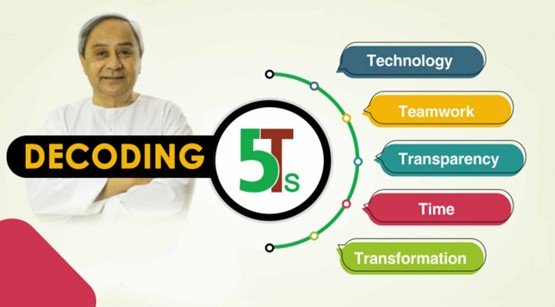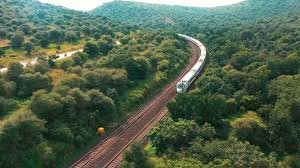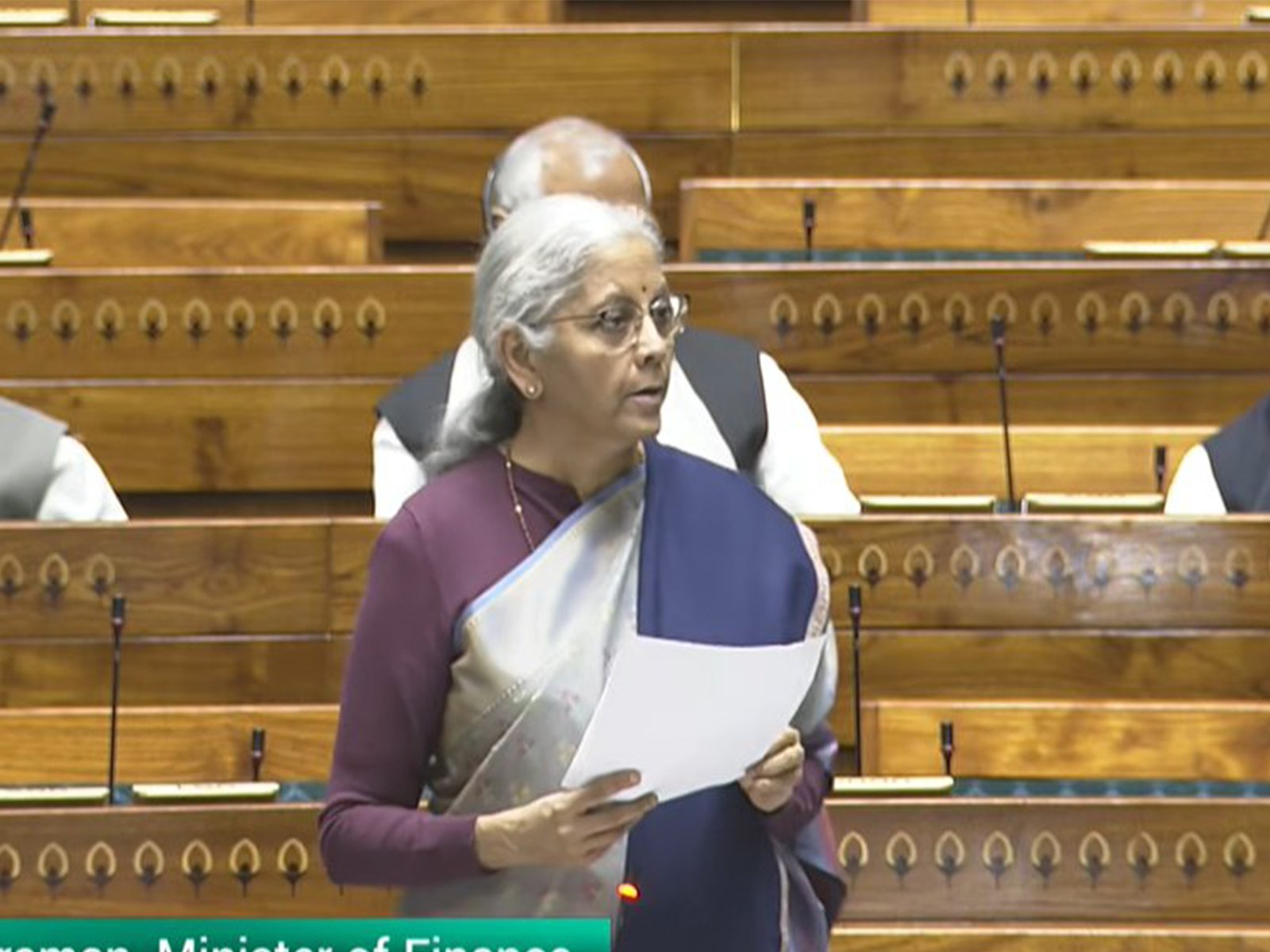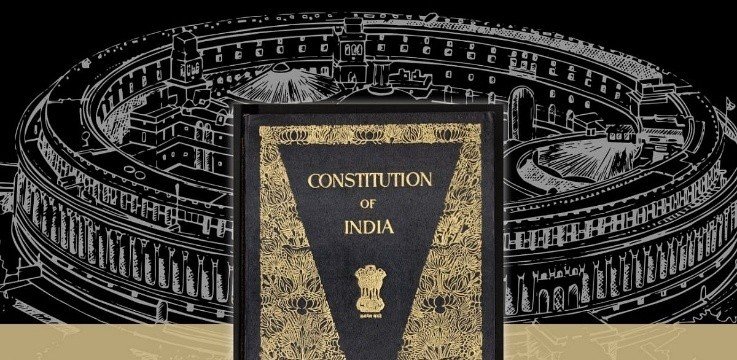Context
The 5T initiative, which stands for Teamwork, Transparency, Technology, Time, and Transformation, is a governance concept introduced in Odisha with the aim of enhancing governance and ensuring effective delivery of public service.
What is the 5T Initiative?
- Teamwork:
- It highlights how important it is for the many government departments and agencies to function as a cohesive team.
- To properly serve the demands of the populace, it encourages cooperation and coordination between different government agencies.
- Transparency:
- An essential component of the 5T effort is transparency. It focuses on increasing public transparency and accountability for government decisions and processes.
- This entails making information easily accessible, cutting back on bureaucratic red tape, and encouraging moral and responsible behaviour in government.
- Technology: It promotes the use of modern technology and digital solutions to improve service delivery, expedite government operations, and boost process efficiency.
- Time: The temporal component emphasizes how crucial it is to provide services on schedule. The 5T model seeks to shorten wait times and guarantee that citizens receive government services on time.
- Transformation: The ultimate goal of the 5T program is to completely change how government departments and organizations operate. Its goals are to increase government responsiveness, citizen focus, and results-drivenness.
Achievements of 5T
- 6,872 high schools had been changed as a result of the 5T initiative by March 2023.
- The number of students enrolled in private schools decreased to 14,62,000 in 2021–22 from 16,05,000 in 2019–20. This suggested that the number of pupils attending public schools had gone up.
What is the Mo Sarkar Initiative?
- It is a governance initiative designed to improve public office accountability and openness while also changing the way government services are provided.
- “Mo Sarkar” means to “My Government” in the vernacular.
- The real-time feedback mechanism is one of the “Mo Sarkar” initiative’s noteworthy aspects.
- Top officials, including the Chief Minister, have access to the phone numbers of citizens who engage with government institutions.
- This feedback system aids in problem identification, evaluation of public servant performance, and, where required, corrective action.
- The “Mo Sarkar” campaign is viewed as a means of returning authority from the bureaucracy to the people and improving the efficiency, equity, and evidence-based nature of governance.
What is the Agenda for the Implementation of the Niti Aayog Like Body in States?
In order to achieve faster and more inclusive economic growth and the goal of becoming a developed nation by 2047, the National Institution for Transforming India (NITI) Aayog would help each state establish bodies akin to these, by replacing its planning boards.
- Initially, it aims for 8-10 states to set up such bodies, before reaching out to all by March 2023.
- Assam, Uttar Pradesh, Madhya Pradesh, and Karnataka are the four states that have already started working in this area.
- Gujarat, Maharashtra, Odisha, and Andhra Pradesh are probably going to start working shortly.
- A plan has been chalked out by NITI Aayog to:
- Assist in the formation of teams to investigate the state planning boards’ current organizational structure.
- Within the next four to six months, conceptualize the State Institution for Transformation (SIT).
- Professionals entering SITs laterally will be encouraged to carry out excellent analytical work and policy proposals.
- Besides reorienting state planning boards as SITs, a blueprint will be made on:
- assisting states in the formulation of policies.
- Monitoring and evaluating government initiatives and programs.
- Recommend improved approaches or technologies for scheme delivery.
What is the Need for Setting up NITI Aayog-like Bodies in States?
- The main drivers of growth in the Indian economy are the states. The aggregate of state growth rates for the national gross domestic product (GDP) is calculated, with the exception of industries such as defence, railroads, and highways.
- The state government is principally responsible for health, education, and skill development.
- The state government plays a crucial role in facilitating corporate transactions, land reforms, infrastructure development, loan flows, and urbanization—all of which are essential for long-term economic progress.
- While most states worked with the Planning Commission in the past and created parallel state five-year plans with the Center, they haven’t done much to revitalize their planning departments or boards thus far.
- Despite having a large workforce, the majority of states’ planning departments are essentially nonexistent and unclear about what exactly they will perform.
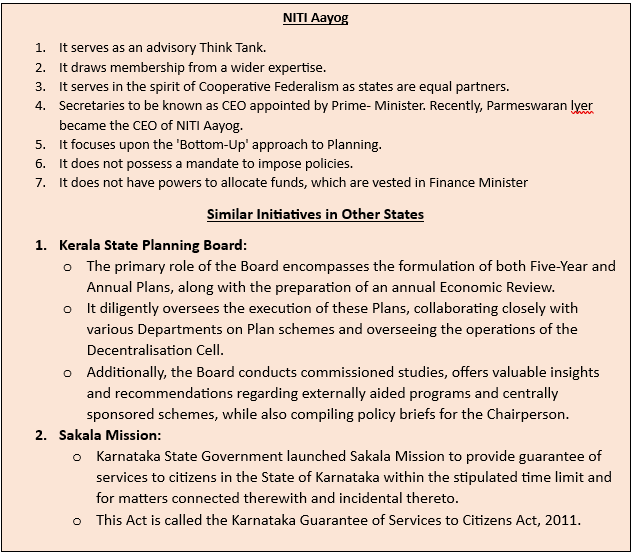
Q. Atal Innovation Mission is set up under the (UPSC-2019)
(a) Department of Science and Technology
(b) Ministry of Labour and Employment
(c) NITI Aayog
(d) Ministry of Skill Development and Entrepreneurship
Ans: (c)


